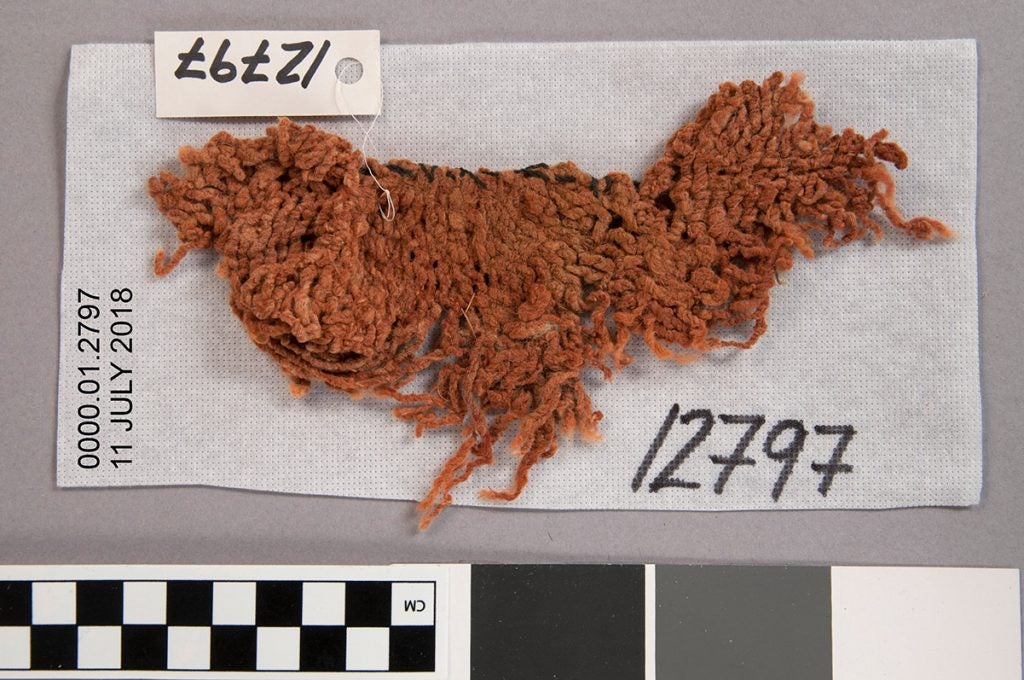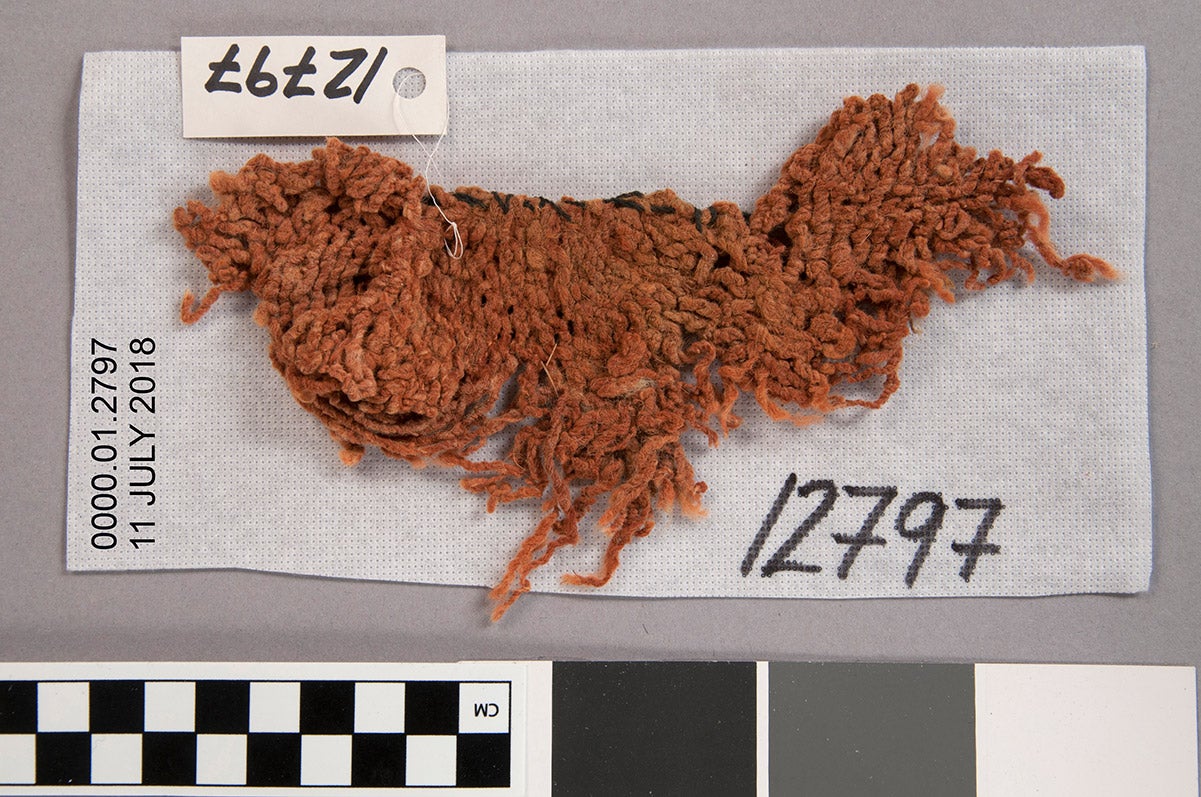Ugly Object of the Month — March 2019
By Suzanne Davis, Curator of Conservation
In last month’s Ugly Object post, we explored some of my feelings about the interior decorating schemes of Roman Egyptians. But while I could not happily collect their colorfully painted god and goddess figurines, I would acquire this month’s Ugly Object in a hot second. For me, this sprang bag only just barely qualifies as something we could legitimately write about in this blog feature, and then only because it is so moth-eaten and frayed.
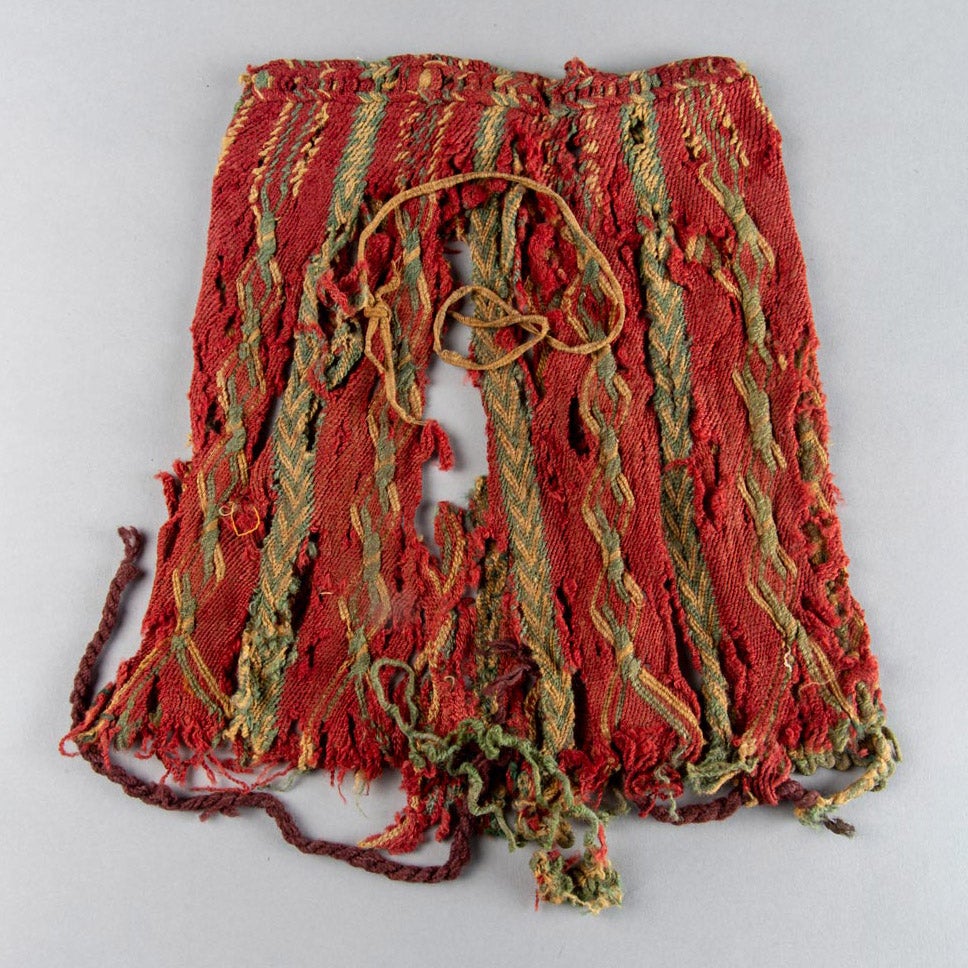
Made with red, green, and cream-colored wool, this bag is truly a special item. It is featured in our current exhibition, Ancient Color, because it’s so colorful. I enjoy the bold color choices, but I’m even more impressed by the many beautifully executed construction details.
In describing non-woven archaeological textiles at the Kelsey, we often use the word “sprang” to refer to looped or twisted yarn construction like we see in this bag. But unlike our “sprang” socks, which were made using a single-needle technique that is similar to knitting, this bag was made using a twisty, warp-only technique that is sort of like braiding and sort of like weaving.
This bag was made by a master sprang craftsperson. The red, green, and cream yarns interact to create complex patterns, but there are also very cool structural details that contribute to a sense of depth and ornament.
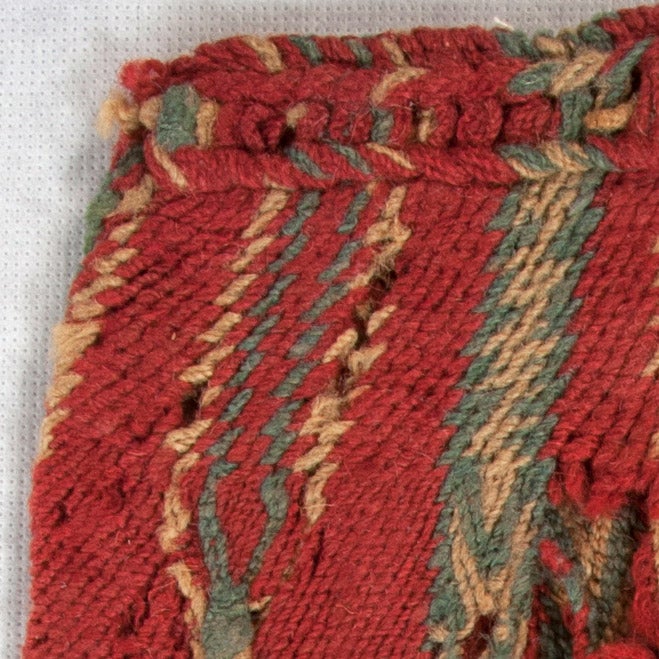
At the top of the bag — as I hope you can see in this detail of the top left corner — the yarns are bundled and held in place with twisting at top and bottom to create an openwork effect. The colored yarns are then carefully twisted to create a highly patterned border along the top edge of the bag, before the green and cream yarns begin a pattern of alternating cable-like and chevron designs.
Here is a closer look at how the green and cream yarns are gathered and twisted as one unit to create what I’m calling a cable-like effect, since this is similar in appearance (and structure) to a cable in knitting.
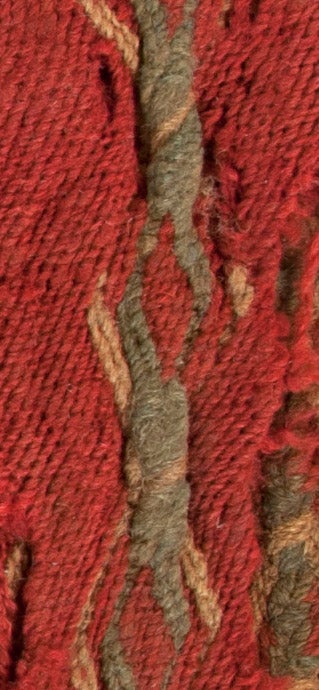
If we sold replicas of this bag in the Kelsey’s gift shop, I’d pick one up today. This bag is both exceptional and exceptionally fragile. It’s very rarely on view, so I encourage you to come see it for yourself now at the Kelsey!
Ugly Object of the Month — March 2019 Read More »

